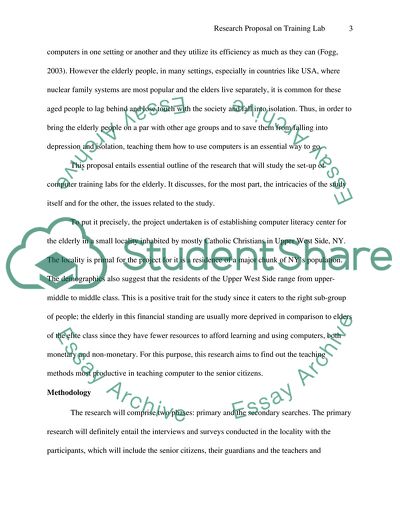Cite this document
(The Training Lab Research Proposal Example | Topics and Well Written Essays - 1250 words, n.d.)
The Training Lab Research Proposal Example | Topics and Well Written Essays - 1250 words. https://studentshare.org/information-technology/1776294-a-research-paper-proposal-written-from-scratch-that-explores-how-to-setup-a-computer-training-lab-for-seniors-and-adults-in-the-community
The Training Lab Research Proposal Example | Topics and Well Written Essays - 1250 words. https://studentshare.org/information-technology/1776294-a-research-paper-proposal-written-from-scratch-that-explores-how-to-setup-a-computer-training-lab-for-seniors-and-adults-in-the-community
(The Training Lab Research Proposal Example | Topics and Well Written Essays - 1250 Words)
The Training Lab Research Proposal Example | Topics and Well Written Essays - 1250 Words. https://studentshare.org/information-technology/1776294-a-research-paper-proposal-written-from-scratch-that-explores-how-to-setup-a-computer-training-lab-for-seniors-and-adults-in-the-community.
The Training Lab Research Proposal Example | Topics and Well Written Essays - 1250 Words. https://studentshare.org/information-technology/1776294-a-research-paper-proposal-written-from-scratch-that-explores-how-to-setup-a-computer-training-lab-for-seniors-and-adults-in-the-community.
“The Training Lab Research Proposal Example | Topics and Well Written Essays - 1250 Words”. https://studentshare.org/information-technology/1776294-a-research-paper-proposal-written-from-scratch-that-explores-how-to-setup-a-computer-training-lab-for-seniors-and-adults-in-the-community.


